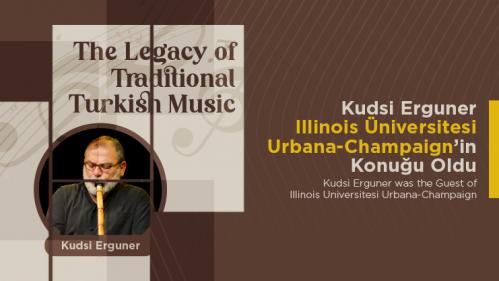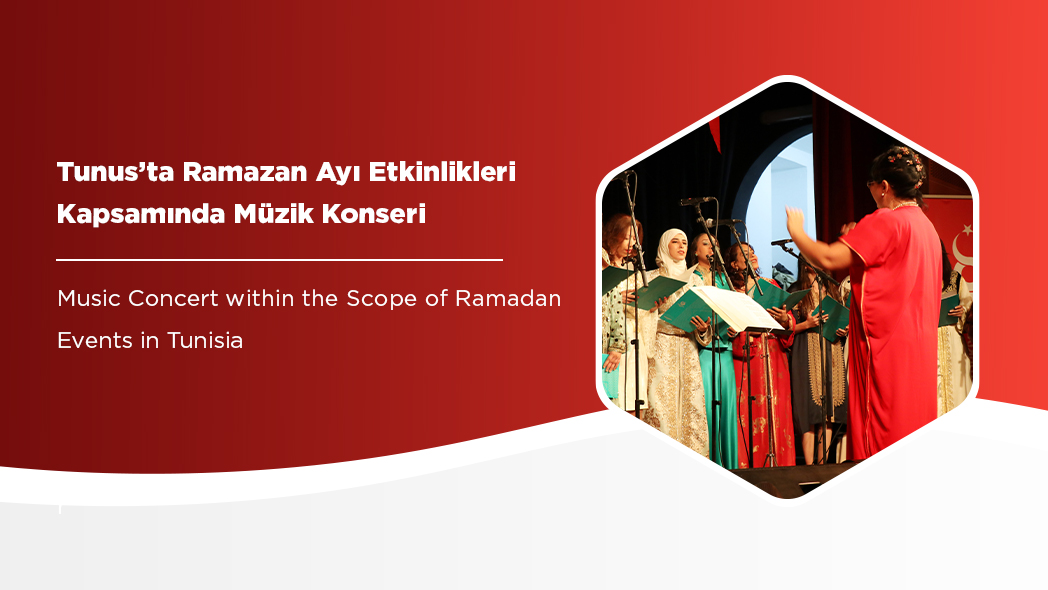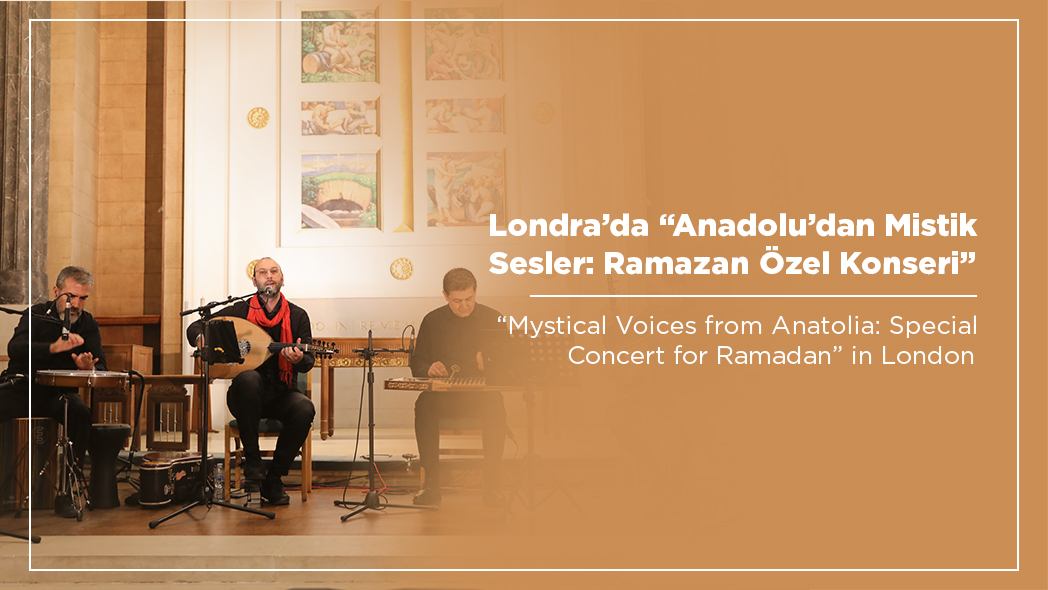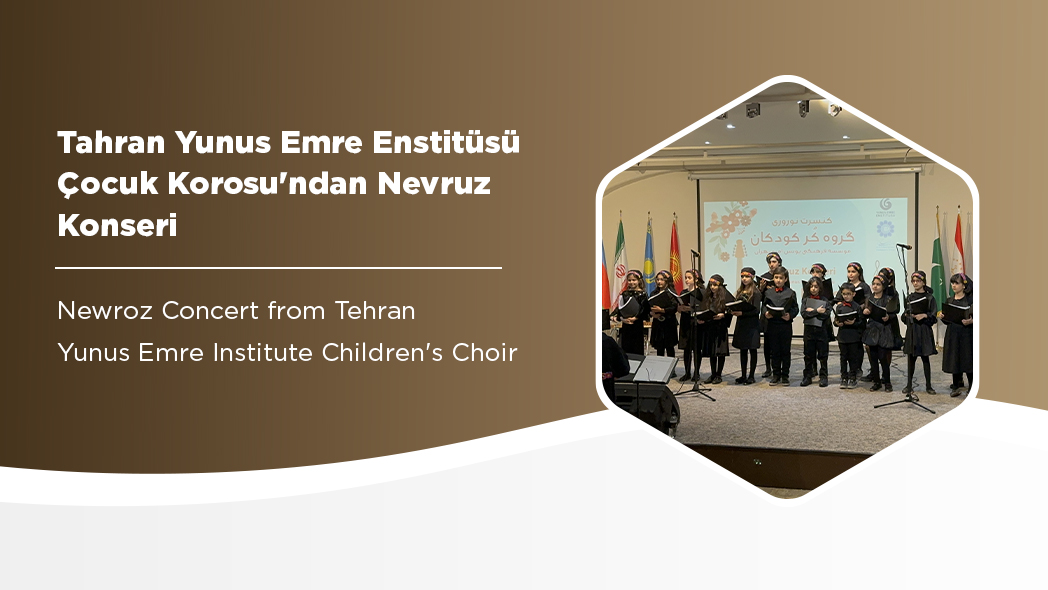Kudsi Erguner Was Hosted by the University of Illinois Urbana-Champaign
Kudsi Ergüner, the virtuoso of Turkish and traditional Mevlevi music, gave a speech about the history of Turkish music and Sufi music at the event organized through the collaboration of the University of Illinois Urbana-Champaign and Yunus Emre Institute.

World renowned ney virtuoso Kudsi Erguner was hosted at the event on May 4, 2021 organized by Yunus Emre Institute and University of Illinois Urbana-Champaign. Erguner delivered a comprehensive presentation about genres of Turkish music, musical heritage of the Ottomans, Sufi music and ney's journey throughout the history of music through the perspective of history, history of music and sociology of music.
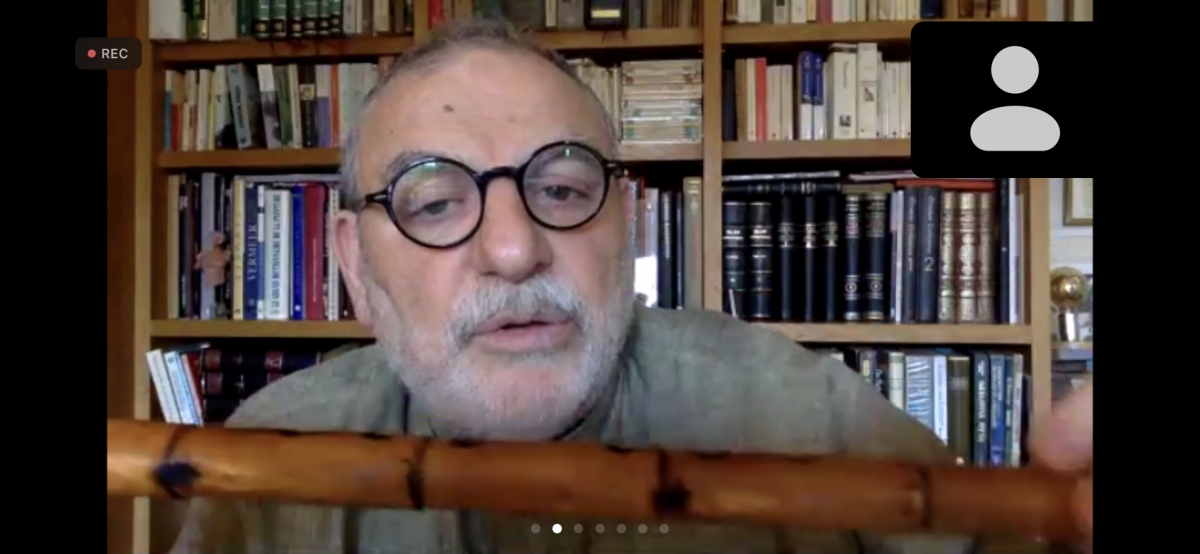
Kudsi Ergüner mentioned that Turkey was the junction of many different civilizations and said that many countries benefited from many civilizations of Turkey. He stated that Turkey, which has a very rich history and is situated at a position that is rich in terms of history and geography, was nourished by the civilizations such as the Hittites, Ancient Greeks, Ottomans and Seljukids.
Kudsi Ergüner connected the rich history of music in Turkey to Turks past in Central Asia and their inclusion in the Islamic civilization and said:
"Roman history is also the same. Asia Minor and Anatolia, in other words, the region of Eastern Greece. This region is also the location where the early Christianity flourished. Gregorian music is also one of the heritages of this region. Khorasan and Iran are also included in this heritage as the Turks also carry the heritage of the Central Asia. The Turkish and Hindu populations are also included in the Islamic civilization. The empires of Ghaznavids and Seljukids emerge, and these empires are ruled by Turkish rulers.
A NEW PERIOD STARTED WITH THE BATTLE OF AL-QADISIYYAH
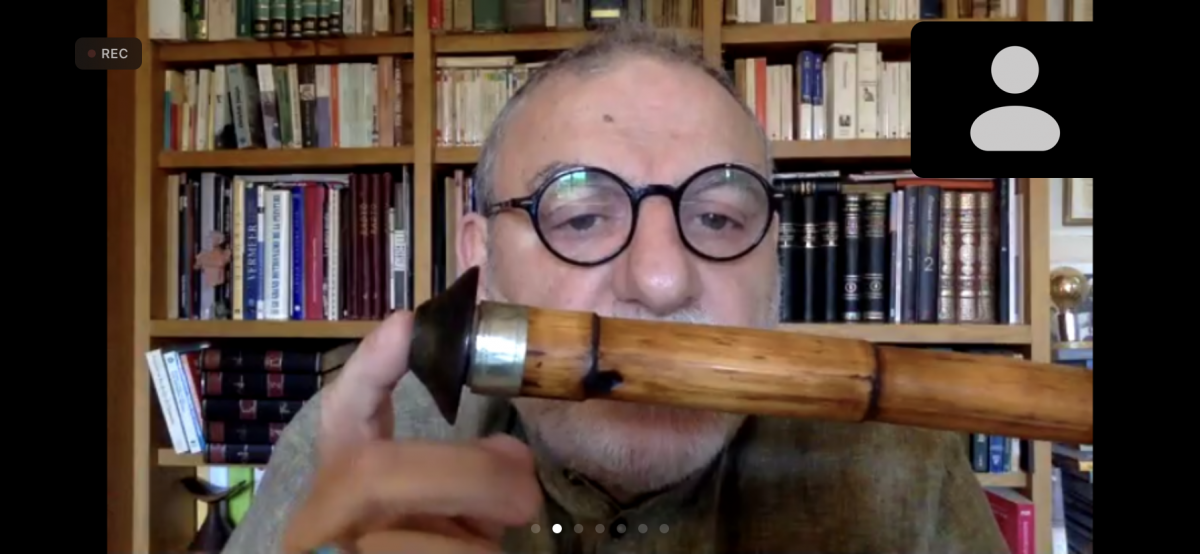
Erguner stated that a new period started when the first Muslim Turks gained the upper hand at the al-Qadisiyyah Battle in 638 and summarized the historical background in the formation of the Ottoman musical tradition as follows:
"The non-Arabic populations of Turks, Persians and Hindus became a part of the Islamic civilization. After that period, many empires that were ruled by Turkish rulers emerged, such as Ghaznavids and Seljukids. The main language used in all these empires was Persian. The Turkish population's communication with Islam was via the Persian language. A new period in Anatolia started especially when the Seljukid army was victorious over the Byzantine army. This period lasted until the Mongol invasions of 1277. Many beyliks emerged after the Seljukid Empire was disintegrated by the Mongols. One such beylik was the Ottomans. The Ottomans expanded from the 14th to 17th centuries and spread over Central Europe, North Africa, Mediterranean and Arabic countries until they collapsed after the First World War. The heritage of the Ottomans was Turkey. When the Republic of Turkey was established in 1923, an Ottoman influence was present in the historical background of Turkey, but there was also a European influence after the foundation of the Republic. Therefore, the Turkish music embodies many different cultural elements and reflect their influences."
TRADITIONS CONTINUE THROUGH CHANGE
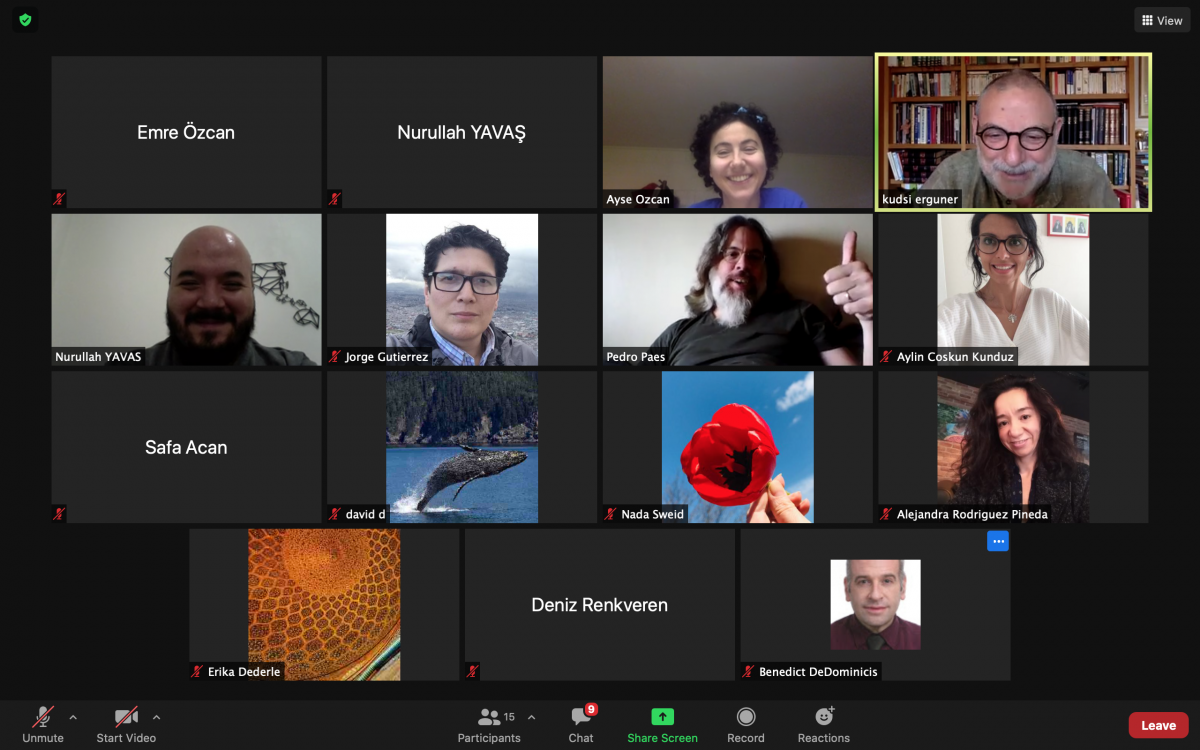
While talking about the Turkish musical tradition, Kudsi Ergüner stated the exact structure of the concept of tradition and the musical genres in the Turkish musical tradition.
"When we talk about traditions, we mean that aesthetics and cultural heritage is also transferred with tradition and that tradition is not something that continues without change. There are different topics when we talk about music in Turkey. One of those topics is the regional traditional folk music. The second one is the music inherited from the Ottoman Empire, and another topic is the Sufi musical tradition. Turkish Classical Music. The one that has the Ottoman heritage, the one that does not have the Ottoman heritage, and the one that has popular songs. Also, there is Arabesque, a newly popular music genre. The Anatolian, city and country music are a genre of music that is connected with today's Arabic music. There is the Classical Western Music with the influence of the West and the modern Turkey's cultural policies. We have composers, symphony orchestras and symphonic music."
FOLK MUSIC DIFFERS FROM REGION TO REGION
The famous ney player Erguner talked about the differences in folk music in different regions and said the following with regards to the diversity in instruments:
"In different regions of Anatolia, instruments such as saz, kemane and kemençe, ney, kaval, balaban (duduk), sipsi and tar. When you go to the region of Kars, you see similarities with the music of Azerbaijan, Armenia and Iran, and tar and typical kemençe are used in these regions. In regions such as Adana, Van, Diyarbakır, you see the aesthetical values of the Syrian and Arabic music. The different regions of Anatolia are referred to as Turkish as they talk in Turkish. The Anatolian music also has religious dimensions such as Bektaşi-Alevi. There is also Anatolian Sufi music within the scope of the Sufi music. However, our topic today is the Ottoman musical heritage, which also my own musical expression. A literary culture has accumulated in some cities such as Herat, Nishapur, Baghdad, Cairo, Alexandria, Hatay, Istanbul. The Ottoman cultural heritage is based on the music of Abdülkadir Meragi, who lived in 15th century Samarkand, Herat and Tabriz."
THE FIRST FORMS OF EUROPEAN MUSIC IS BASED ON THE DIVAN MUSIC
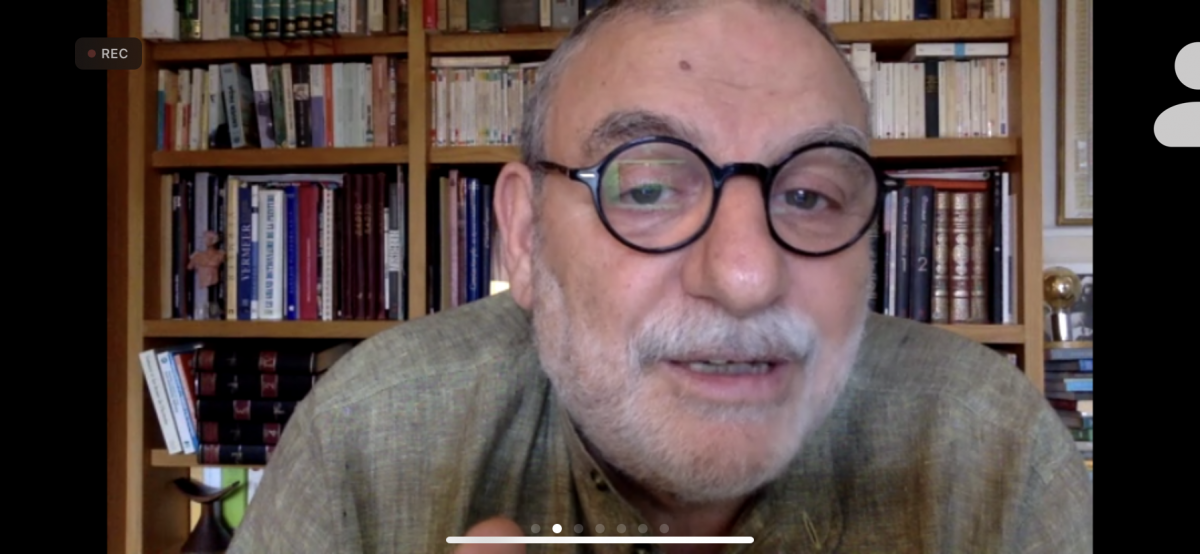 Erguner said the following on the place of maqams in the Divan music and the fact that the first forms of European music were based on Divan music:
Erguner said the following on the place of maqams in the Divan music and the fact that the first forms of European music were based on Divan music:
"When we talk about this literary music, we do not mean the Italian, French, German or English music, we talk about the European Classical Music in some centers of the Middle East. Today's European music is also based on the Ottoman musical heritage. The Divan music and lyrics are based on the Divan literature. Persian, Arabic and Turkish were blended with these influences. The Divan music is also called the Maqam music. Maqam is a musical language. There are 150 maqams in the Ottoman heritage, and most of them are not used today. If we must describe the Maqam music; Maqam is a melodic journey. There is a special interval for each maqam. And for each interval, there is a very special hierarchy that creates a specific aesthetic. The most important thing in this music is the intervals.
"When we look back in the history, Ancient Greek Pythagoras also measures the distance between the intervals in music. Pythagoras acquired this theory from al-Farabi." |
When we look back in the history, Ancient Greek Pythagoras also measures the distance between the intervals in music. Pythagoras acquired this theory from al-Farabi, who also studied musicology. There are 41 intervals within 1 octave in this maqam. This means that we are talking about microtonality. In addition, this microtonality system was also present in Anatolian folk music and Ottoman classical music as well as in first forms of European music, Gregorian music, and Afghanistan and India. However, this system was abandoned by Europe. After they started to use polyphony, a different development occurred during the Baroque and Enlightenment periods and the system changed to diatonic. On the one hand we have one octave with 41 intervals, and on the other there are 20 intervals. The number of maqams decreased in the European music and the concepts of major and minor emerged."
Erguner explained the structural properties of Ottoman musical works as follows:
"If we talk about the Ottoman classical music, there are also different genres. The classical interpretations of the Ottoman music are called fasıl. Fasıl means section. If we are interpreting it from a maqam, we play a form in order to perform different genres of music in relation to each other, which we also call suite. Respectively, we play an instrumental section called prelude or peshrev. Then, a sophisticated part called "kar" is performed. After that, a small masterpiece called "kaçi", and then, the "murabba" part which includes a poem, and finally, the "semai" is performed.
TURKISH CLASSICAL MUSIC IS NOT A CONTINUATION OF THE OTTOMAN HERITAGE
The famous ney player mentioned that the Turkish Classical Music was not a continuation of the Ottoman heritage, contrary to popular belief. Erguner stated that the Ottoman musical heritage was abandoned during the final periods of the Ottoman Empire for the sake of popularity and a new form called "songs" with simple melodies emerged in the same period. "We are making a huge mistake calling this genre the Ottoman heritage. Because it is not an Ottoman heritage. It is a continuation of the 19th century and has the form of maqam music." said Erguner.
Erguner explained that the Arabesque music was the combination of many different elements of the Eastern art, but it was externalized through quite different ways of expression, and said, "On the other hand, Arabesque music is a giant salad. You put everything in it. It looks like a continuation of the Eastern literature in terms of lyrics, but it prefers a much wilder method in expression.".
THE OTTOMAN MUSIC IS EVERYWHERE FROM THE MOSQUES TO DAILY LIFE
Kutsi Erguner mentioned that there were many functions of music and said the following:
"There are Mevlids performed in mosques in dedication to the Prophet. There is also the "tevşihat" genre performed in mosques, which is well related to the Ottoman maqam music. In summary, Turkey is quite rich in terms of literature, music and history due to its history. The Turkish music is not nationalist and encompasses the entire musical history."
FROM THE SUMERIAN NEY TO THE TURKISH NEY
"They say that this is the oldest instrument in the world. There are quite a few theories. Turkish musicologists will tell you about which part goes back to Sumerians. This is possible. As a more substantial proof, there is a design in the Louvre Museum that dates back to 700-800 BC. This is an instrument that is played with the exact same method. We can say that this a Mediterranean instrument." |
Erguner introduced his instrument and mentioned the following for the origins of the word "ney", which means cane in Persian:
"They say that this is the oldest instrument in the world. There are quite a few theories. Turkish musicologists will tell you about which part goes back to Sumerians. This is possible. As a more substantial proof, there is a design in the Louvre Museum that dates back to 700-800 BC. This is an instrument that is played with the exact same method. We can say that this a Mediterranean instrument. There are two methods for playing the ney. Because there is something called Iran. They also played the ney the same way, but a ney player during the 18th and 19th centuries adapted the blowing mechanism of the pipe played by the shepherds into ney and caused the birth of the Iranian ney. However, Iranians also use the ney we use in Turkey. The sound of ney is composed of 3 octaves, just like the human voice.". Erguner also mentioned that Rumi, who lived during the 13th century, likened the ney to human form in his own metaphoric language.
NEY WAS EVERYWHERE IN THE OTTOMAN GEOGRAPHY
Erguner stated that the ney was the main instrument in Sufi tradition but that this did not mean that the ney was a sacred instrument and mentioned that the ney was also used for different functions in the Arabic music. Erguner mentioned that there were 210 "Mevlevihanes" (Sufi Houses) during the 18th century and said, "Special ceremonies were held at the Mevlevihanes in Skopje, Athens, Thessaloniki and different cities of Macedon, Baghdad, Jordan, Damascus, Aleppo and Crimea, and these ceremonies were carried out with ney.".T
TANBURI CEMIL BEY IS IN THE CURRICULUM OF CONSERVATORY IN TUNISIA
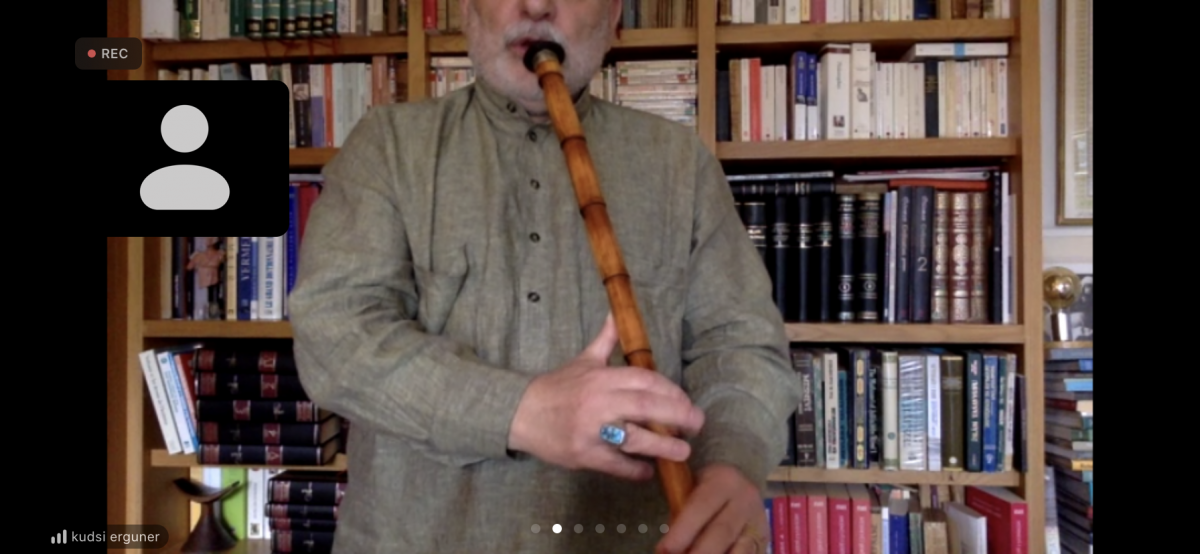
Erguner highlighted the universality of the Ottoman musical tradition and said, "You need to be able to perform the compositions of Tanburi Cemil Bey in order to graduate from the conservatory in Tunisia.". Erguner mentioned that there were many Ottoman composers of Armenian and Greek origin and stated that these artists moved from the nationalist line to the imperial line through the universal heritage of the Ottomans.
Erguner also mentioned that these traditions were abandoned in those regions and stated that the interest in the ney by the youth was increasing and the ney was in demand not only in Turkey but also in the Arabic countries.
Erguner answered the questions of the audience and performed his ney live.

